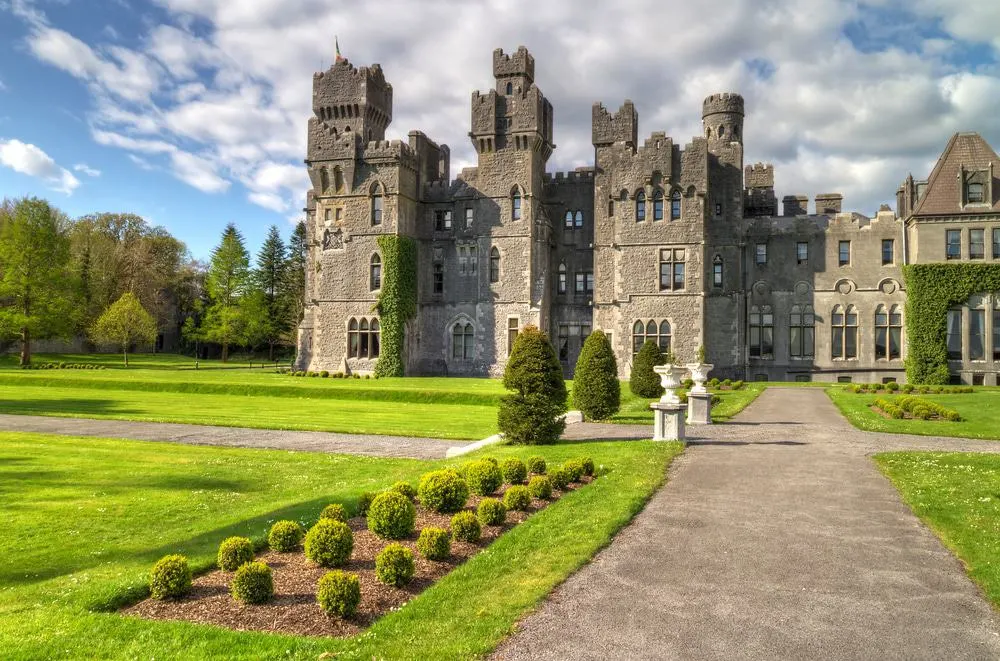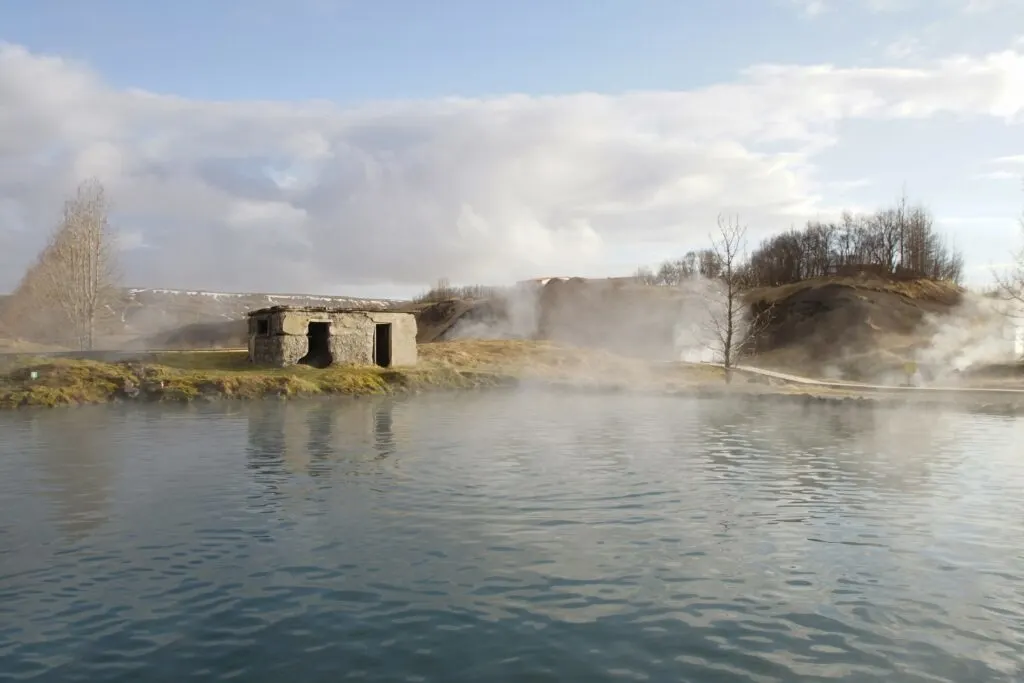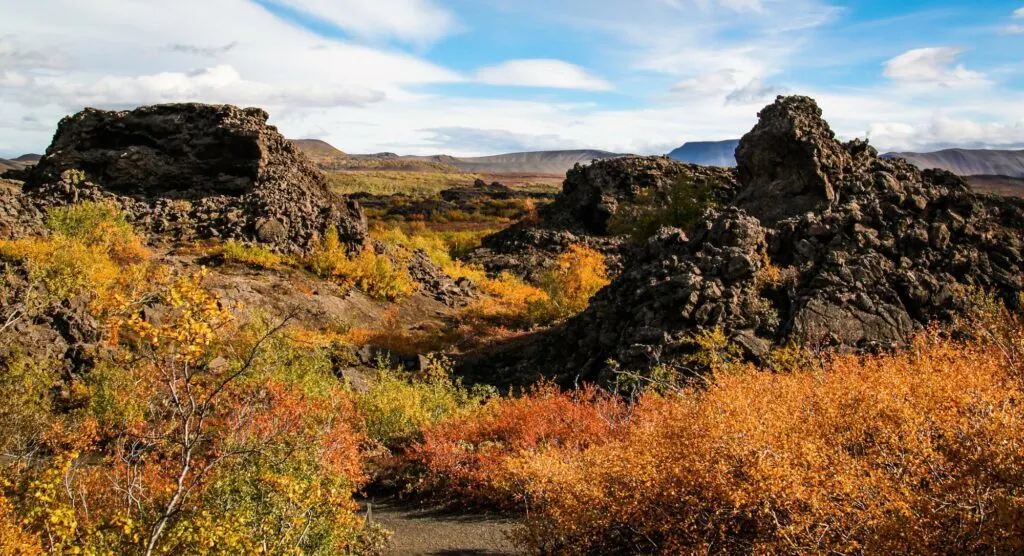Are there Castles in Iceland?
I asked this question myself on our last trip to Iceland. One thing that most European cities have in common is the presence of a castle, especially in the capital city.
After failing to see one in Reykjavík, I began to think that in fact I had not seen a lot of old buildings in Iceland at all, even the church in the centre of town was modern.
But Iceland is not a new country and people have inhabited Iceland since the Vikings so why is this case and are there castles in Iceland?
Plan Your Iceland Trip!
🛌 Find the perfect hotel on Booking.com
🎫 Get exploring by booking tours and excursions on Viator
🚗 Find the cheapest car with Car rentals
Are there Castles in Iceland?
To answer your question, there are no stone castles still standing in Iceland.
Was there ever castles in Iceland?
Indeed, there were once castles in Iceland, although they were primarily constructed using wood like many buildings in Iceland. Throughout the centuries, these wooden castles gradually deteriorated or were dismantled, with the wood repurposed for various needs.
Unfortunately, due to their eventual disappearance, the history and detailed accounts of these castles have been largely lost to time. However, their existence serves as a testament to the ancient architectural practices and the evolving landscape of Iceland’s historical past.

You won’t see something like this in Iceland
Why are there no castles?
The sea acts as a barrier a castle otherwise would
In Iceland, the majestic sea itself served as a formidable defense against potential invaders, making castles unnecessary. Furthermore, the vast distance from other lands acted as an additional deterrent.
The country’s main resource and wealth stemmed from its abundant fish stocks, rendering other valuable commodities scarce.
Iceland always had a small population
Due to Iceland’s relatively small population, the economic means to support the construction and maintenance of castles was limited.
The geological composition of the land in Iceland poses challenges for castles
Another significant factor contributing to the absence of castles is the geological composition of the land. Iceland is predominantly formed of volcanic lava, which poses challenges for traditional stone-based construction methods.
The rough and uneven nature of lava rock makes it impractical for building imposing fortifications.
Instead, Iceland’s natural landscape, characterized by its awe-inspiring glaciers, geysers, and geothermal wonders, stands as a testament to the country’s remarkable beauty and captivating allure.

No castles but a lot of amazing hot springs!
Does Iceland have a King or Queen?
No, Iceland does not have a royal family of its own. From 1918 to 1944, Iceland experienced a period known as the Kingdom of Iceland, where the Danish royal family held the position of the King of Iceland.
During this time, the Danish monarch reigned separately over Iceland as a distinct country, creating a personal union between the two kingdoms.
As a result of this historical arrangement, the current Queen of Denmark, Margrethe, bears an Icelandic middle name, Þórhildur. It was initially expected that she would grow up to become the Queen of Iceland. However, in 1944, the people of Iceland voted overwhelmingly (98%) to abolish the monarchy and establish a republic.
Consequently, Iceland’s head of state today is a president. It is important to note that Iceland never truly had its own native monarchy as it had been under the rule of Denmark or Norway since 1262. Prior to that, Iceland had some local ruling chiefs, but this system differed from the monarchy as known in present-day Europe.
Iceland has 2 non traditional ‘castles’ you might like to check out
Borgarvirki Fortress
Borgarvirki Fortress, located in the northwest of Iceland, stands as the lone structure reminiscent of a castle or fortress in the country. The best time to visit Borgarvirki Fortress is during the summer, allowing for a relaxed, self-guided tour of this remarkable historical site. If you want to visit it is a bumpy 10-15 min drive off the Ring Road.
It holds particular significance considering the Viking heritage of the population, with over sixty percent of Icelanders tracing their roots back to Nordic ancestry. Vikings, known for their invasions and fierce nature, may have led one to expect more fortifications in the country.
Borgarvirki Fortress was officially recognized as a historical site in 1817, becoming one of the earliest protected landmarks in Iceland’s history. Situated in the Huna District, it serves as a prominent landmark along the route. But what exactly is Borgarvirki Fortress, and what was its purpose?
Located on the Vatnsnes peninsula in northwest Iceland, Borgarvirki Fortress is both a volcanic plug and a columnar basalt formation. With dimensions ranging from 10 to 15 meters, it stands approximately 177 meters above sea level. Legend suggests that the structure served as a Viking stronghold, although there is no concrete evidence to support this claim.
It is worth noting that many of the country’s historical structures have eroded over time, making Borgarvirki’s survival all the more remarkable. Coupled with its legendary associations, it earns its place as the sole structure reminiscent of a fortress in this list. In 1949, locals renovated the fortress, adding a sign detailing its history for visitors. They also constructed a gravel lintel at the entrance and a murno glast wall around it.
The rocky terrain surrounding Borgarvirki Fortress presents some challenges but features steps that lead to the top. While ascending, caution is advised due to fallen rocks and potential loose stones. However, the breathtaking view of the landscape and water bodies below from the summit makes the climb truly worthwhile. Within the fortress, there is a hollow depression measuring five to six meters. It is evident that man-made stone walls once stood here, featuring an opening to the east.
Parts of the structure were reconstructed between 1949 and 1950. Visitors will find an informational board providing historical insights, legends, and various facts about the fortress.
Now, what is the legend associated with Borgarvirki? According to Þjóðsögur Jóns Árnasonar – the Collection of Folklore of Jón Árnason, it is believed to have been built to protect Finnbogi from enemies during the 11th century. While the website mentions the lack of concrete evidence and considers it a mere legend, many still hold it to be true.
Some speculate that the legend of the fortress might be an older version of the Heiðarvíga Saga, although this remains unconfirmed. It is important to note that there are no definitive historical records about Borgarvirki, its purpose, or its users. However, the remaining structures and folklore lend credence to the belief that it served as a fortress, potentially during the Icelandic civil war.
Sagas also suggest that Borgarvirki faced two unsuccessful attacks by significant armies. The fortress encompasses mesmerizing views of the surrounding landscape and has a perimeter spanning 200 fathoms. Steps at the rear of the fortress provide access. Inside, visitors will discover the remnants of two small huts, a grassy dell, and a wellspring.

This fortress is as close as it gets to a castle
Dimmuborgir
Securing its place on this list is Dimmuborgir, a structure that captures attention due to its rich folklore. Before delving into the legends surrounding it, let’s explore the geology behind this remarkable formation. Dimmuborgir originated approximately 2,300 years ago when a volcanic eruption occurred in the geologically active region of Lake Mývatn.
During the eruption, lava engulfed a nearby body of water, causing the water to boil and releasing copious amounts of steam into the air. As the lava cooled, the pillars of steam disrupted the formation, resulting in the creation of caves and caverns within the cooled lava. Today, these intriguing formations are known as the Black Castles, drawing comparisons to medieval fortresses in their design.
Now that we understand its geological origins, let’s delve into the folklore that surrounds Dimmuborgir and contributed to its inclusion on this list. According to Icelandic folklore, trolls are believed to be real, and lava caves serve as the dwelling places for these savage and malevolent creatures. One of the most famous troll tales involves Grýla and her husband Leppalúði. Grýla, a half-troll and half-ogre being, was notorious for her habit of devouring misbehaving children and owned a massive cat.
During the Christmas season, it is believed that Grýla’s insatiable appetite targeted children who failed to complete their sewing and weaving chores before the festivities began.
This legend continues to motivate young children to diligently complete their tasks. According to folklore, Grýla and Leppalúði had thirteen sons who resided in Dimmuborgir and terrorized the locals during the thirteen days preceding Christmas. Each son possessed his unique strategy or ability to achieve their malevolent goals.
These sons, known as the “Icelandic Santa Clauses” or Yule Lads, were named after their distinct strategies. For example, there was Stubby, the sausage stealer, and the candle beggar, among others. On the first day of December, children would place their shoes on the windowsill.
If they had been well-behaved throughout the year, they would discover presents in their shoes. However, if their conduct had been less than exemplary, they would find a potato instead. Interestingly, Dimmuborgir may appear familiar to some as it served as a filming location for the renowned HBO television series, Game of Thrones.
Dimmuborgir’s unique geological formation and its captivating folklore make it an extraordinary destination that blends natural wonder with mythical tales, creating an enchanting experience for visitors.
There are a lot of other things Iceland does not have….
Iceland is an interesting country and there are many other things that Iceland doesn’t have that most of the rest of the world does. A few things spring to mind:
Starbucks – You won’t find a Starbucks in Iceland. They don’t have the population to support a franchise like this. It doesn’t mean that Iceland doesn’t have good coffee in fact quite the opposite, it prides itself on the abundance of great coffee shops it has.
Uber – There is no uber in Iceland.
McDonalds – McDonalds used to be in Iceland but it left. Similar reasons to Starbucks. The population didn’t dig Maccas and preferred their own fast food like the Icelandic hot dog.
***
More Iceland Fun to help you plan your trip:

